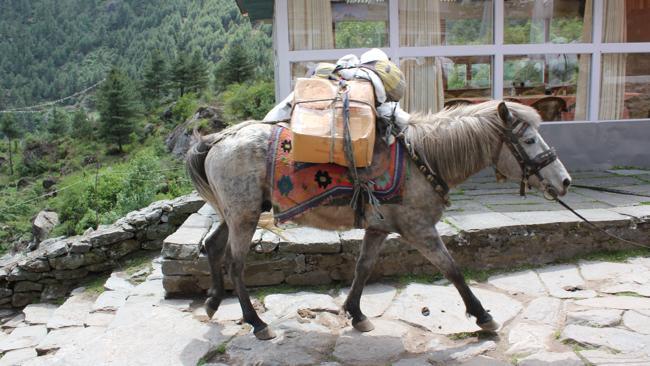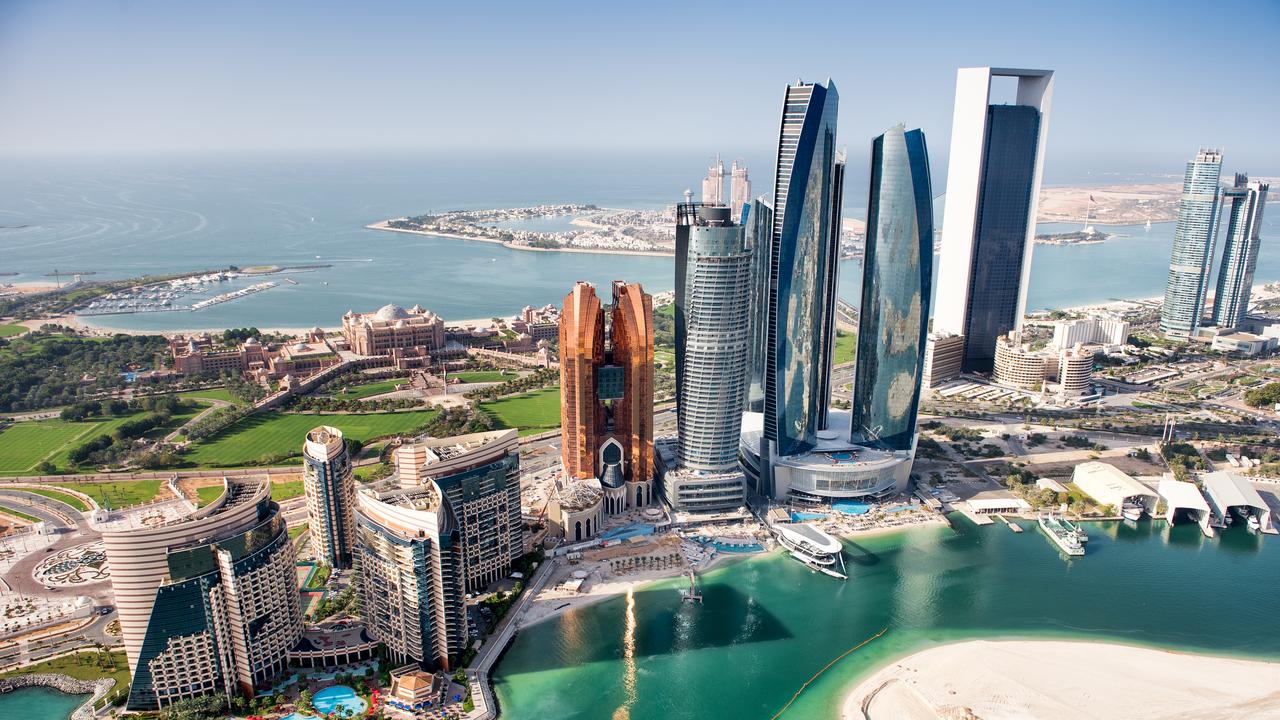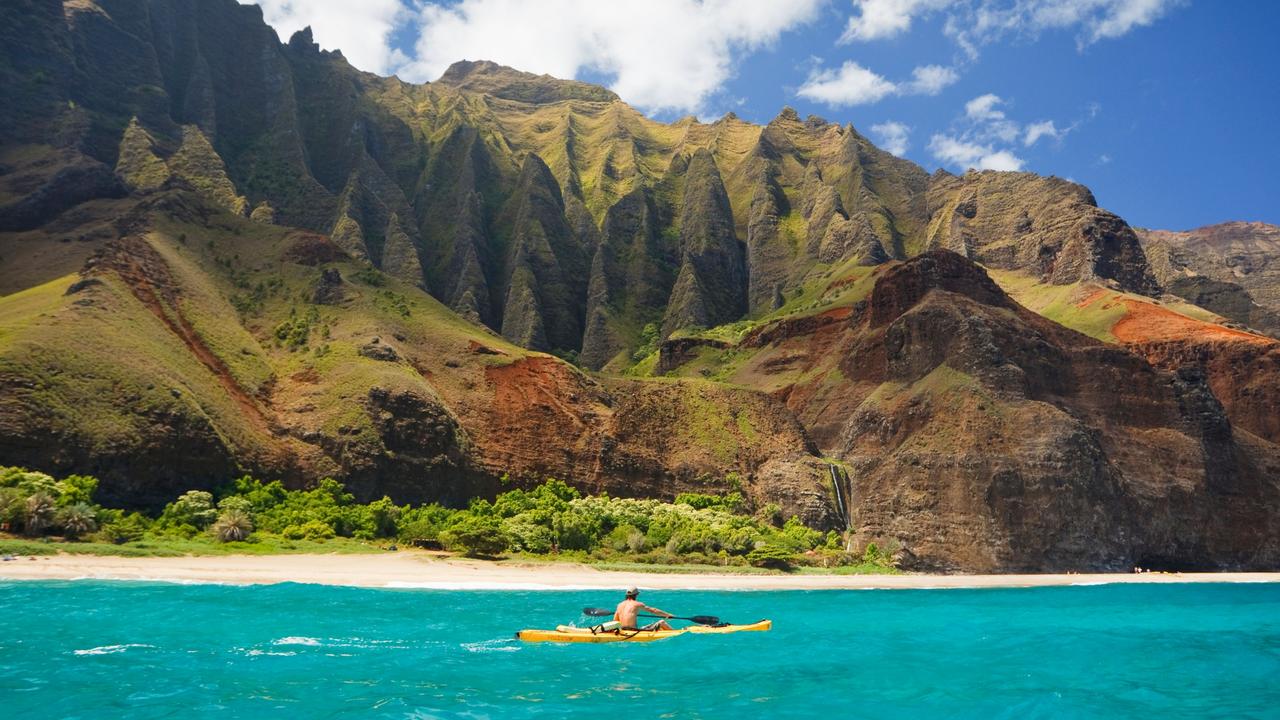Following the famous path to the heights of Mt Everest in Nepal
SIR Edmund Hillary's Mt Everest summit climb 60 years ago is still paying dividends for Nepal.

Destinations
Don't miss out on the headlines from Destinations. Followed categories will be added to My News.
IT WAS only in 1950 that Nepal first opened its borders to the world. Three years later Sir Edmund Hillary and Tenzing Norgay climbed to the top of the world's highest peak and, almost overnight, Nepal changed.
Seeing the region first hand helps you appreciate how much more Everest is than just a mountain - it has bridged relationships between the Nepalese and Western visitors for decades. To celebrate the 60th anniversary of Hillary and Norgay's successful ascent, I've joined adventure travel company World Expeditions on an eight-day trek to the Khumbu (Everest) region's spiritual heart. The flight from Kathmandu to Lukla is thrilling. As our twin prop aircraft banks to the left we catch our first magnificent view of the Eastern Himalayas. Through the gap between the pilots I can see the angled runway of Lukla Airport - all 480m of it, before it cuts sharply into the valley below. A safe landing into the world's most dangerous airport can't be an easy feat. Heart rate back to normal, we toast the skill of the flight crew over sweet Nepali tea before setting off for our first day's hike. Walking through Lukla it's easy to imagine a landscape none too different from the one we see now. Fewer pine trees, more tea houses and the helicopters are new but the appearance of the valley is largely the same. We pass chiming Buddhist prayer wheels, mani stones carved with the om mani padme hum mantra and porters carrying impossible loads. We pass fields of potato flowers, wild strawberries, cabbage and wheat - the landscape doesn't seem real. Strings of coloured prayer flags welcome us to our first camp at Ghat, where we eat enormous plates of rice, curry and potato before dispersing to our tents. Although short, the first day's trek at higher altitude has taken its toll. I fall asleep on my comfortable stretcher-style bed to the roar of the Dudh (milk) River as it foams through the gorge below. It is a privileged time to trek. There are enough facilities to make the journey comfortable and safe and yet the region remains remote. Crossing a bridge near Monjo, Nepal. Picture: Chanel Parratt The next day we feel less like visitors. On our way to Monjo I'm eager to speak to our guide, Sonam Sherpa, about the effect tourism has had on the region. "Personally I don't think there are negatives to tourism in the Khumbu," he says. "We used to have problems with deforestation for cooking and heating but these days the wood collecting is controlled, gas is brought up from Kathmandu and people are being educated about protecting the environment." If you choose a trekking company with a conscience, you can have a positive impact. "World Expeditions have built eco-friendly permanent campsites and try to take care of local people. "They don't use yaks to transport bags, they hire more porters and supply them with food, clothing and shelter on top of their pay - not many companies do that," he says. The 60th anniversary since Hillary and Norgay reached the top holds as much significance for the Sherpas as it does visitors to the region. "If we didn't have that achievement that has attracted so many people to the area I wouldn't have been educated. I would work as a porter somewhere, most likely while I tried to support a family," Sonam says. As we emerge from our tents the next morning the snow-capped peaks of Kongde Ri and Thamserku stand luminous as the day's first sun bounces off the snowy summits. The hike to Namche is physically the most challenging. Trading tents for an eco-lodge, we find pictures of Hillary and Norgay on the walls of the Hotel Sherwi Khangba. Sonam takes us through the hotel's Sherpa Museum and gallery. Pictures of his grandfather, father, uncle and even mum hang from the walls. For Sonam, trekking is a modern adaptation of what his forefathers did. "My family have benefited greatly from the wealth brought to the region through tourism," he says. A demanding climb from Namche to the Thyangboche Monastery sees a transitioning landscape and plenty of group bonding. The forest thins, the ground becomes dry and oxygen is harder to come by as we all triumphantly push through 3000m. It's also a day to catch our first sight of Everest but, by the time we reach camp, the fog and clouds are rolling in and we can barely see 50m in front. A donkey near Lukla, Nepal. Picture: Chanel Parratt Thankfully the morning proves a reliably good time to catch our first view. Everest along with Nuptse, Lhotse, Ama Dablam and friends crowd around the monastery and we talk excitedly among ourselves - base camp next year? As further reward for getting up so early the monks invite us to watch their morning prayers. Inside the monastery, a low harmonic rumble washes over the lacquered floors and painted walls as they chant. Originally built in 1923, the Thyangboche Buddhist Monastery is the largest and oldest in the region - a young Norgay was born nearby and at one time was briefly sent to the monastery to study to become a monk. Our day of rest turns into a night of celebration with our porters and guides as we remember the achievements of Hillary and Norgay. The writer was a guest of World Expeditions. GO2 - NEPAL GETTING THERE Thai Airways fly to Kathmandu via Bangkok from Sydney . STAYING THERE World Expeditions itineraries allow generous acclimatisation and a leisurely pace, with camping in comfortable permanent campsites, wilderness camps and eco lodges in the main villages. Prices include all meals on trek, airport transfers, internal flights, guides, porters, use of a World Expeditions trek pack (which includes a quality sleeping bag, down or fibre fill jacket) all park entrance fees and trekking permits. 12-day Everest Trek $1950; 15-day Everest Family Trek $2150; 22-day Everest Circuit $2890. More: worldexpeditions.com or call 1300 720 000. "Like" Escape.com.au on Facebook Follow @Escape_team on Twitter


